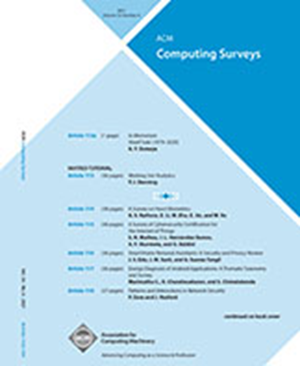视觉技术在交通监控系统中的应用综述
IF 28
1区 计算机科学
Q1 COMPUTER SCIENCE, THEORY & METHODS
引用次数: 0
摘要
交通监控系统(TSS)在现代智能交通系统中变得越来越重要,视觉技术在场景感知和理解中起着核心作用。虽然现有的调查通常侧重于TSS的孤立方面,但仍然缺乏一个连接低级和高级感知任务的综合分析框架,特别是考虑到新兴技术。本文对TSS中的视觉技术进行了系统的回顾,研究了低级感知任务(目标检测、分类和跟踪)和高级感知任务(参数估计、异常检测和行为理解)。具体而言,我们首先为每个任务提供详细的方法分类和综合绩效评估。我们的研究揭示了当前TSS的五个基本局限性:复杂场景下的感知数据退化、数据驱动的学习约束、语义理解差距、感知覆盖限制和计算资源需求。为了应对这些挑战,我们系统地分析了五类当前方法和潜在趋势:高级感知增强、高效学习范式、知识增强理解、合作感知框架和高效计算框架,并批判性地评估了它们在现实世界中的适用性。此外,我们评估了基础模型在TSS中的变革潜力,这些模型在不同任务中表现出显著的零概率学习能力、强大的泛化能力和复杂的推理能力。本文提供了一个统一的分析框架,连接低级和高级感知任务,系统地分析了当前的限制和解决方案,并提出了一个结构化的路线图,整合新兴技术,特别是基础模型,以提高TSS能力。本文章由计算机程序翻译,如有差异,请以英文原文为准。
Vision Technologies with Applications in Traffic Surveillance Systems: A Holistic Survey
Traffic Surveillance Systems (TSS) have become increasingly crucial in modern intelligent transportation systems, with vision technologies playing a central role for scene perception and understanding. While existing surveys typically focus on isolated aspects of TSS, a comprehensive analytical framework bridging low-level and high-level perception tasks, particularly considering emerging technologies, remains lacking. This paper presents a systematic review of vision technologies in TSS, examining both low-level perception tasks (object detection, classification, and tracking) and high-level perception tasks (parameter estimation, anomaly detection, and behavior understanding). Specifically, we first provide a detailed methodological categorization and comprehensive performance evaluation for each task. Our investigation reveals five fundamental limitations in current TSS: perceptual data degradation in complex scenarios, data-driven learning constraints, semantic understanding gaps, sensing coverage limitations and computational resource demands. To address these challenges, we systematically analyze five categories of current approaches and potential trends: advanced perception enhancement, efficient learning paradigms, knowledge-enhanced understanding, cooperative sensing frameworks and efficient computing frameworks, critically assessing their real-world applicability. Furthermore, we evaluate the transformative potential of foundation models in TSS, which exhibit remarkable zero-shot learning abilities, strong generalization, and sophisticated reasoning capabilities across diverse tasks. This review provides a unified analytical framework bridging low-level and high-level perception tasks, systematically analyzes current limitations and solutions, and presents a structured roadmap for integrating emerging technologies, particularly foundation models, to enhance TSS capabilities.
求助全文
通过发布文献求助,成功后即可免费获取论文全文。
去求助
来源期刊

ACM Computing Surveys
工程技术-计算机:理论方法
CiteScore
33.20
自引率
0.60%
发文量
372
审稿时长
12 months
期刊介绍:
ACM Computing Surveys is an academic journal that focuses on publishing surveys and tutorials on various areas of computing research and practice. The journal aims to provide comprehensive and easily understandable articles that guide readers through the literature and help them understand topics outside their specialties. In terms of impact, CSUR has a high reputation with a 2022 Impact Factor of 16.6. It is ranked 3rd out of 111 journals in the field of Computer Science Theory & Methods.
ACM Computing Surveys is indexed and abstracted in various services, including AI2 Semantic Scholar, Baidu, Clarivate/ISI: JCR, CNKI, DeepDyve, DTU, EBSCO: EDS/HOST, and IET Inspec, among others.
 求助内容:
求助内容: 应助结果提醒方式:
应助结果提醒方式:


